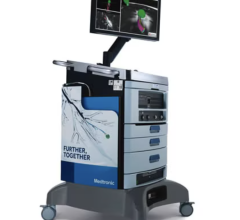
Representative images of various lung ultrasound patterns considered in this study. Image courtesy of Annals of Family Medicine.
Panel A: Normal lung ultrasound showing the A-lines pattern, with a well-defined pleural line (long arrow) and parallel A-lines (short arrows). Panels B and C: Pathological B-lines patterns showing multiple and separated B-lines (arrows in panel B) and coalescent B-lines (arrows in panel C). Panels D, E, and F: Images of consolidations, evident as subpleural hypoechogenic areas with an echogenic air bronchogram. Panel F also shows a hypoechogenic fluid bronchogram (arrow).
May 25, 2022 — Researchers in Spain conducted a study to compare the diagnostic accuracy of lung ultrasounds (LUS) performed in the primary care setting to chest X-rays (CXR) performed by a radiologist when diagnosing community-acquired pneumonia (CAP). While previous research demonstrates that ultrasounds are a useful tool to diagnose pneumonia in the hospital setting, most studies have not addressed diagnosis in the primary care setting where patients often present with less severe symptoms.
Over a seven month period, physicians at 12 primary care clinics performed LUS, followed by CXR, on 82 patients with clinically suspected CAP. Researchers then compared each LUS finding with the corresponding CXR report. Their findings suggest that, for pneumonia cases detected by LUS, the test’s high specificity could mean it is safe for primary care physicians to directly prescribe antibiotics, thus reducing patients’ exposure to X-ray radiation and saving time and money.
All study participants had performed ultrasound in other areas of medicine, including abdominal ultrasound, and were able to achieve a high level of diagnostic accuracy after receiving only five hours of LUS training. Because the test can typically be performed in 10 minutes or less, the authors posit that incorporating LUS into daily practice may be a time- and cost-saving measure for patients and physicians alike.
For more information: www.aafp.org


 September 12, 2024
September 12, 2024 








